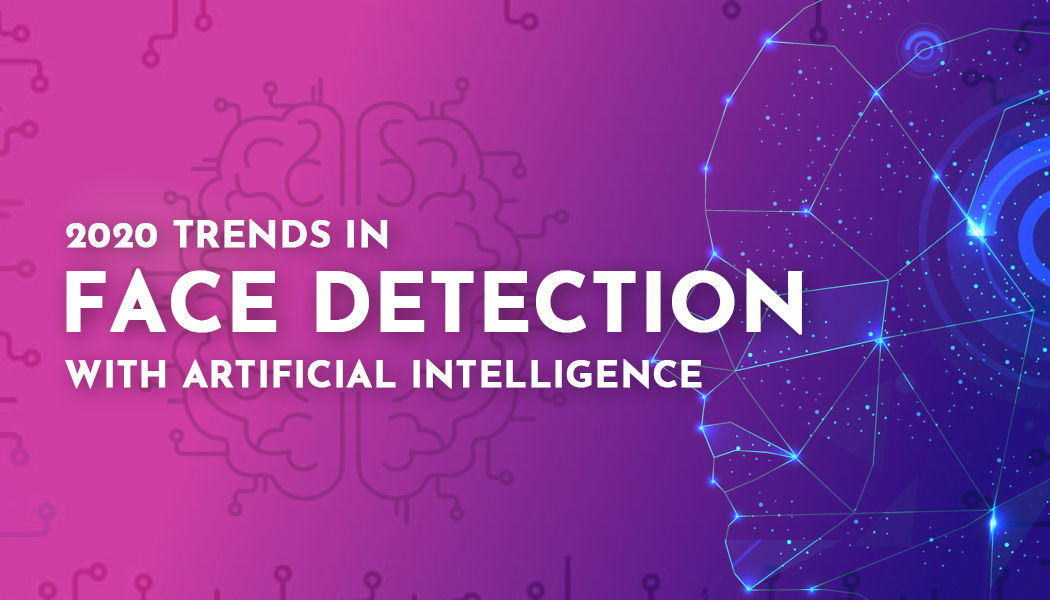2020 Trends in Face Detection with Artificial Intelligence
Artificial Intelligence imbued face detection is really set to take off now in 2020 and in the years to come. Way back in the 1960s, Woody Bledsoe, Charles Bission and Helen Chan Wolf developed facial recognition technology. Goldstein took it a bit further in 1970 by using 21 facial measurement points. Kirkby and Sirovich used 100 points in 1988. Turk and Pentland developed basic facial recognition technique in 1991. DARPA created the first database of facial images in 1993 and upgraded to 24 bit colour images in 2003. Perhaps, Facebook’s creation of identity auto tagging in 2010 may be one of the turning points in giving this technology a boost. Apple’s iPhone X got face recognition access control technology in 2017. The growth of artificial intelligence development saw widespread adoption of facial recognition in various areas, supplementing or replacing biometrics.
A burgeoning market for facial recognition
Without artificial intelligence development to back it up, facial recognition would not have gained traction. The market is expected to attain growth rate of 13% by 2023 to exceed market value of $ 7 billion by 2024. First used in army intelligence, this technology’s use is now more widespread:
- Government: maintain records of citizens, criminals and to identify missing persons
- Banking: A securer way of authentication of credit and debit cards, fraud prevention, maintaining database of known criminals and fraudsters
- Business workplaces: Access control, with fingerprint biometrics being replaced by facial recognition
- Education: attendance tracking, exams
- Entertainment: Access to halls
- Travel: Identification and paperless travel, facial registration of travelers and visitors at airports, railway stations
- Automotive: cars recognize owners and start only with face authentication
- Medicine: Identification of rare genetic diseases and diagnosis based on facial symptoms
AI based algorithms for facial recognitions are faster and more accurate than what a human can do by visual comparison. Automated facial recognition accuracy is 98.5% compared to 97.5% figure for human based recognition. Google’s FaceNet achieved an accuracy rate of 99.63%.
If facial recognition is proving to be better way of authentication, it must be said that there are negatives too. There is a rise in instances where governments use facial recognition technologies for surveillance of citizens. Google is especially careful about deploying facial recognition technologies and, in the wake of Black Lives Matter movement, IBM, Amazon and Microsoft are not permitting police to access facial recognition technology. However, looking at the positive trends for 2020 and beyond, facial recognition offers great promise when implemented right by AI development services.
Identifying emotions
Artificial Intelligence Development has helped facial recognition progress from simple recognition of faces to being able to identify emotions. This opens up possibilities for applications in various areas:
- Marketing: Facial recognition with emotion recognition is expected to play a bigger role inbeing able to gauge reactions of target customers to campaigns, when they view a product or when they interact with sales personnel.
- Software: Developers can come up with better user interfaces and deliver seamless experience when they have access to data that shows emotions of users while using the software. This includes first impression test, task based usability, interactions and comparatives. Going a step further, it can help in other employee related areas.
- HR: Facial recognition with emotion recognition could certainly help recruiters analyze a candidate’s facial expressions to questions asked during the interview and ongoing discussions.
- Education: Face and emotion recognition can change education. By keeping track of facial emotions it is possible to gauge how well students understand a topic, how interested they are and judge the quality of teaching too.
Apart from emotion based facial recognition application, AI development services are active in other interesting application areas.
Facial recognition for financial transactions
Facial recognition is expected to gain momentum in banking and financial transactions. While it may not replace credit and debit cards at the moment, it is likely to become the new norm in the time to come, whether it is to make payments at POS or to withdraw cash or for transactions.
Better driver safety
Future cars are likely to have dashboards with cameras that will monitor drivers’ faces and detect distraction or drowsiness and raise an alarm or even slow down the car.
Voting and government processes
Voting becomes easy once facial recognition is incorporated into the process. No more having to carry identity cards or appear at specific booths. No more black marks on fingers. Likewise, citizens entitled to government benefits need not apply for and keep a variety of cards. Facial recognition facilitates government processes in the future and AI development services are expected to play a key role.
Searches online
You search for people online by using names. Future searches could see more of image search and facial recognition searches to help you find friends, family and even locate missing persons.
Keeping AI development services by your side can prove more useful than you think, in whatever industry segment you are. The future is exciting as facial recognition will blend with gait recognition and remote heartbeat identification systems to precisely identify individuals.




